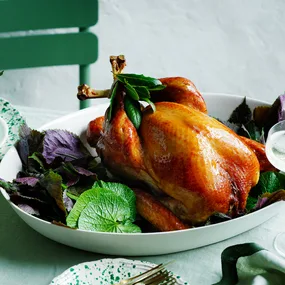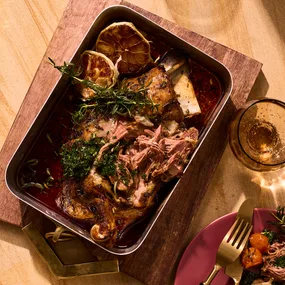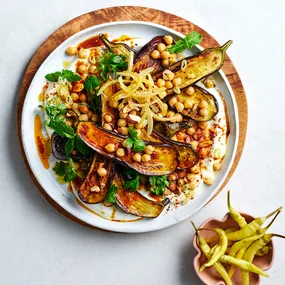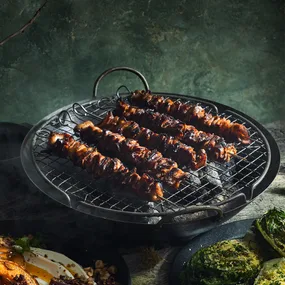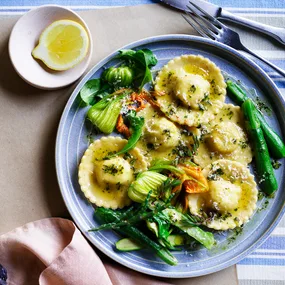When the Hainanese left their native villages on the tropical island of Hainan, off China’s southern coast, little did they know they would make an indelible culinary mark in South East Asia. They are credited with bringing two culinary traditions to Singapore and Malaysia: coffee shops and Hainanese chicken rice.
A three-in-one meal, chicken rice is so loved in Singapore it’s practically the national dish. Consisting of nothing more than poached chicken, rice cooked in the poaching stock and a soup made from the stock, served with the all-important chilli sauce, it’s a dish fit for the gods. During Chinese New Year and other special occasions, it takes pride of place on the altar table.
I’ve had some uninspiring versions, some of them in Hainan. Chicken rice as we know it doesn’t really exist there, in the same way that the Singapore fried noodles served here in Australia aren’t actually found in Singapore.
Chicken rice renown comes down to two factors. First, it’s based on a dish made with the pampered chickens farmed in Wenchang county in north-east Hainan. These free-roaming birds are fed a diet of fresh coconut and unrefined rice. When they’re ready for the pot, these magnificent birds are moved to a barn for more pampering. Apparently, when they were presented to a Qing emperor, he proclaimed them the best chicken he had ever tasted and the legend of Wenchang chickens was born. Their skin is creamy-yellow, their meat tender, and they are indeed flavourful and juicy. If you’re looking for a good chicken here, I like the Saskia Beer and Holmbrae birds.
Second, when the Hainanese emigrated to Singapore and Malaysia in the mid-19th and early 20th centuries, they were economically deprived. As late migrants compared with the Cantonese and Hokkiens, who arrived a few decades earlier, they ended up working in the service industry or as cooks and housekeepers for the colonial British.
Some time during the Depression, these enterprising Hainanese started to open coffee shops and, not content with selling the creamed cakes and soft-boiled eggs they learnt from the British, they introduced other comfort food, including chicken rice.
It was during this period, the legend goes, that Swee Kee Restaurant in Singapore adapted the traditional chicken rice of Hainan to the version we know today, adding aromatics such as garlic and pandan leaves to the rice for fragrance and depth. Pure conjecture? Who knows? But I made a pilgrimage to this institution before it closed in the 1990s, and it was delicious.
I can’t remember precisely when I first ate this dish made famous by my ancestors. I do, however, recollect my parents and relatives preparing it as a family ritual.
Since the chicken is the star, my mother insisted on organic free-range chickens. She even once used fresh capons. The task of dispatching and cleaning these prized birds invariably fell to my brother-in-law. My sister and I were left to prepare a mountain of garlic, ginger and chillies for the dipping sauce. My mother cooked the rice and made traditional rice balls for me.
Hundreds of recipes and thousands of interpretations exist for this classic dish. Some people insist on two separate sauces, one of ginger and the other chilli, instead of the two in one. Some cooks offer thickened dark sauce as another condiment. As for the soup, some like bean shoots while my family prefer watercress. All agree on one point, though: chicken rice in Hainan isn’t served with chilli sauce, and it’s this inspired addition that has made a homely dish utterly magical.

Tip 1: Remove the excess fat from the chicken
(Photo: Rob Shaw)Tip 1: Remove the excess fat from the chicken
There are a few tricks to making authentic chicken rice. You need a good chicken, of course. You also require chicken fat for the rice, which should be found attached to the bird’s cavity. If there’s none or not enough, don’t panic; just use vegetable oil instead, or to make up the quantity to 50gm. You can also ask your butcher for extra.

Tip 2: Dunk the chicken
(Photo: Rob Shaw)Tip 2: Dunk the chicken
To cook the chicken, use a pot that will fit the bird snugly. And here’s the tricky bit. You need to dunk the chicken in and out of the boiling water three times, bringing it back to the boil between each dunking. When the bird is boiled straight off, the muscles tighten; this method heats the meat slowly, allowing it to soften and relax rather than shocking it. After this, it’s cooked in barely simmering water for 20 minutes, then it sits in the poaching liquid 40-45 minutes to finish cooking.

Tip 3: Plunge the chicken into iced water
(Photo: Rob Shaw)Tip 3: Plunge the chicken into iced water
The bird is then plunged into an ice-water bath; this prevents the juices escaping and sets them in a thin gelatinous layer between the flesh and the skin.

Tip 4: Use chicken fat to flavour the rice
(Photo: Rob Shaw)Tip 4: Use chicken fat to flavour the rice
For the rice, I first render the chicken fat down to oil in a wok, then remove the crisp solids (a delicious snack with salt) and use it to fry the shallots and garlic until they’re golden and fragrant before tipping in the rice and tossing it well. The trick here is to have enough heat for the rice to pop or jump in the wok. You’ll notice that it takes on a smoky wok hei flavour. I use Thai jasmine rice for its fragrance.

Tip 5: Chop the chicken, Chinese style
(Photo: Rob Shaw)Tip 5: Chop the chicken in the Chinese style
Use a cleaver to split the bird down the middle through the breastplate and backbone, then remove the legs and halve them at the joint. Remove and halve the wings in the same manner. Halve the breasts lengthways and chop each into bite-sized pieces. Arrange the chicken on a platter with cucumber and top with soy-sesame dressing and coriander and serve with the rice and soup in individual bowls and the chilli sauce. My family adds coriander and chicken fat from the stock to the sauce just before serving.
In a time-honoured tradition, this recipe has been handed down from my mother and her mother before her. My family and many Hainanese families offer balls of pressed rice to their children as part of the ritual. The restaurant Chung Wah in old Malacca still observes this tradition.
Ingredients
Method
Main
Note If the chicken fat doesn’t render to 2 tbsp rendered fat, make up the quantity with oil. Pandan leaves are available from Asian grocers.
Notes

